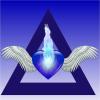 Submitted by LOGOS - Overseer on
Submitted by LOGOS - Overseer on

Here is a weird tale that waxes a wee bit Frankenstein and defies explanation…
In 1807, in an isolated area somewhere in a western section of England, a gentleman scholar by the name of Andrew Crosse began a series of strange experiment involving electricity. It all started when he visited a cave known for its prolific growth of crystals in order to discover the process by which the crystals had formed. Crosse’s hypothesis was that the crystals which lined the roof of the cave were a result of some type of upward electric attraction. He was soon back in his manor house laboratory growing his own crystals and eventually produced about 200 different varieties. Most of these crystals were similar to those found in nature but others defied anything known to be created by nature or through the artistry of man.
In 1837, Crosse began a new experiment to see if he could form “glass crystals”. He used ground flint and potassium chloride dissolved in hydrochloric acid to form a fluid which was to be allowed to dry slowly through a porous “electrified” stone. Two weeks into the experiment, he noticed some strange white filament like projections located at the center of the stone. Twelve days later, a weird insect standing erect in the same location was observed. Two days following this observation, Crosse was amazed to find several of these little creatures moving their limbs and freeing themselves from the host stone. In a very short time, nearly 100 insects appeared on the stone. They were a very peculiar sight with bristles and no discernable shell.
The insects were identified as an odd form of acari or more specifically, mites. The big question that remained was how they got there. Crosse covered all the bases first suspicious that the little creatures may have been in the water base of the solution before he started the experiment or that perhaps the eggs of a passing insect may have fallen into his apparatus and that the ovum was then hatched due to the electric charge. It also crossed his mind that he might have created the insects himself. This was very disconcerting to Crosse so he decided to run the experiment again.
This time, under stringent and sterile controlled conditions, Crosse set up seven glass cylinders each with a different chemical solution. All of the cylinders were sealed and each was subject to electrical current. After a few months, the strange acari appeared in all but two of the cylinders. Even though the experiment was a success, Crosse was very dismayed and frightened because he felt that the appearance of the creatures despite the controlled conditions meant that he had actually created life. He decided to seek out a rational explanation.
Unfortunately, no explanation was forthcoming. A scientist by the name of W. H. Weeks and the rather infamous physicist, Michael Faraday repeated Crosse’s experiment with the same results. It is it believed that several others repeated the experiment successfully and that it was eventually suggested that the new species be dubbed Acari Crossli. Crosse was heartily supported by the scientific community but when he published his findings he was completely ridiculed by the public and accused of arrogance and blasphemy by the clergy. He was quickly and irrevocably outcast by all and literally labeled a devil man. The ongoing and never ending controversy that ensued was so bitter and damaging that Crosse retired in seclusion. He continued to study electricity but restricted his experimentation to the purification of seawater and the preservation of food using “electrified water.”
The mystery surrounding Crosse’s Critters remains unsolved to date. Any records of the exact methods he used have been lost over the years. It is interesting to note that there is some evidence that Mary Shelly, the author of Frankenstein, actually attended one of Crosse’s lectures on electrical experimentation during the earlier days before Crosse’s world crashed around him. The astrologers and astrology buffs in our audience might be interested to know that Crosse was a Gemini born on June 17, 1784. He was considered a child prodigy and became a skilled practical joker by the age of twelve. It is too bad that in the end, Nature had the last laugh.